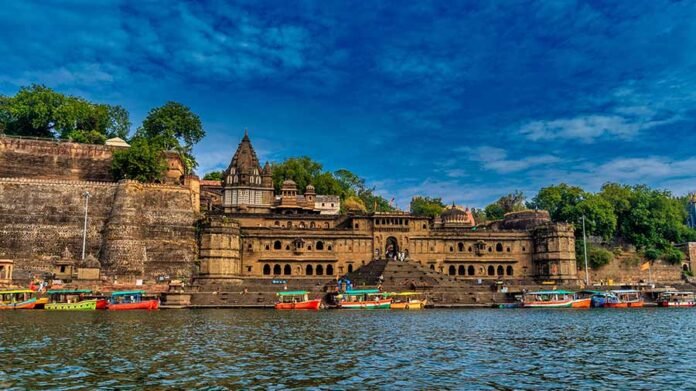
The Maheshwari saree has carved a unique identity not only in India but across the world. Among Indian attire, the saree reigns supreme as the most preferred garment for women, and when it comes to Maheshwari sarees, it’s essential to recognize that the beauty of these sarees is intertwined with the beauty of the women who wear and weave them. Let’s delve into the fascinating story behind Maheshwari sarees.
Maheshwar, a historic town in Madhya Pradesh situated on the banks of the Narmada River, is renowned for its rich culture and history. The Maheshwar Fort, located here, is not only celebrated for its grandeur but also stands as a unique symbol of women’s empowerment. It is the first palace that narrates the story of women’s strength and self-reliance, where female weavers can be seen working at their looms—a sight that embodies the image of an empowered and self-sufficient woman.
The Maheshwar Fort was constructed in the 18th century by Queen Ahilyabai Holkar of the Holkar dynasty. Ahilyabai was a visionary ruler who demonstrated exceptional administrative skills while taking significant steps for the welfare of women in society. During her reign, Maheshwar gained fame for its cotton and silk sarees, breathing new life into the art of weaving. This tradition, started by the queen, to empower women by hand made textile, thrives even today, with women weavers showcasing their craft within the palace premises.
The women weavers here not only create traditional Maheshwari sarees but also set an example of self-reliance through their hard work and skill. These sarees are known for their intricate designs and vibrant colors, making them popular both in India and abroad. A dedicated area within the palace allows tourists to observe these women at work on their looms and gain a deeper understanding of their artistry. This scene is a living testament to women’s empowerment, where women strengthen their identity and economic independence.
The Maheshwar Fort is not just a historical structure; it is also a hub of inspiration. The women here prove that tradition and progress can coexist harmoniously. Preserving the legacy of Ahilyabai Holkar, this place continues to be a significant step toward empowering women.
Tourists visiting Maheshwar are not only captivated by its beauty and tranquility but also draw inspiration from the confidence and diligence of its women. This palace truly stands as a symbol of women’s power, bridging history and the present.
(The writer is Anjali Solanki)

